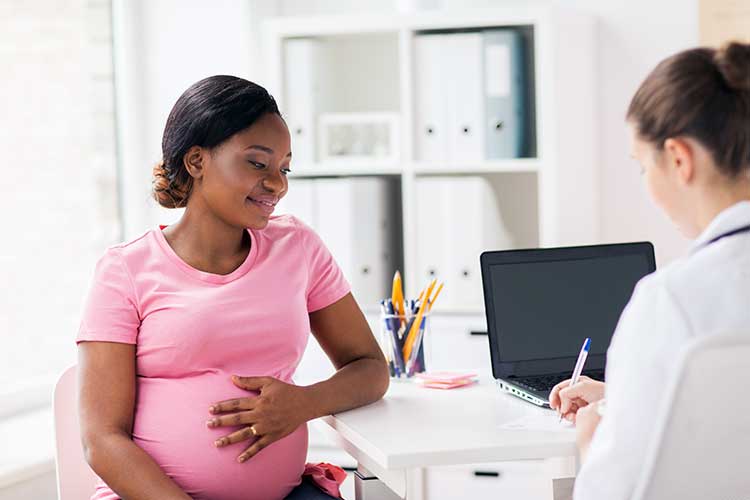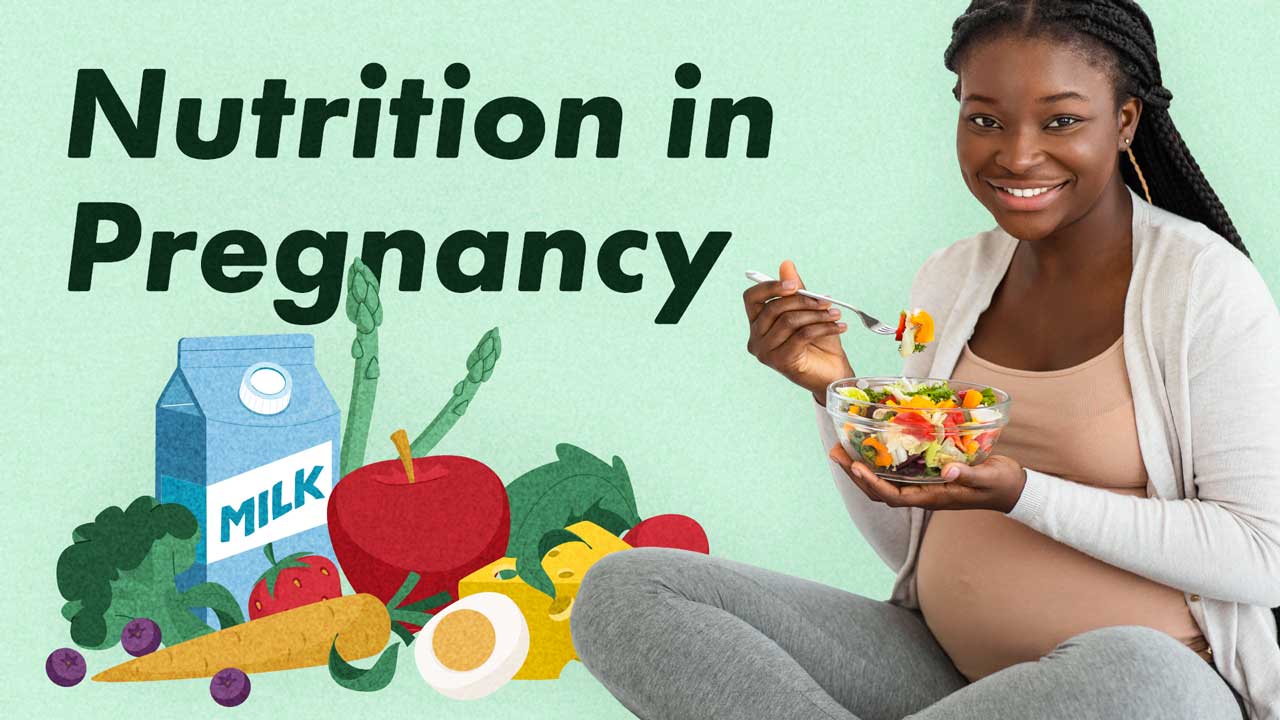Pregnancy nutrition is a topic that can easily be overlooked, yet it plays a crucial role in maternal health as well as fetal and infant wellbeing (Walsh & McAuliffe 2015).
Midwives are ideally placed to provide education on nutrition during pregnancy, but to date, there is very little published research evaluating midwives’ knowledge, attitudes and confidence on the subject. What little research there is tends to be exploratory and descriptive and suggests that midwives lack basic knowledge of nutritional requirements.
One study that stands out in particular, however, suggests that whilst midwives’ attitudes towards educating pregnant patients about nutrition are positive, their knowledge and confidence do not align with these attitudes.
As Arrish, Yeatman and Williamson (2016) suggest, this is most likely due to a lack of education during training, along with very few continuing professional development resources that focus on pregnancy nutrition.
Eating For Two
One of the many myths surrounding pregnancy is that the patient should be ‘eating for two’. While extra food intake might be required in the second and third trimesters to ensure the baby receives adequate nutrients, ‘eating for two’ is not necessary (DoHaAC 2021a).
It is only in the last 12 weeks that patients need an extra 200 calories (840 kilojoules) per day for appropriate weight gain, depending on their activity level (WSLHD 2019; Tommy’s 2021).

Healthy Weight Management
Read: Obesity in Pregnancy
Steady weight gain is important during pregnancy, however, excessive gestational weight gain can increase the risk of gestational diabetes and hypertension (Better Health Channel 2022).
The following table outlines recommended weight gain during pregnancy, depending on the patient’s pre-pregnancy BMI.
| Pre-pregnancy BMI | Recommended weight gain (over the whole pregnancy) |
|---|---|
| Below 18.5 | 12.5 kg to 18 kg |
| 18.5 to 24.9 (18.5 to 22.9 if Asian) |
11.5 kg to 16 kg |
| 25 to 29.9 (23 to 27.5 if Asian) |
7 kg to 11.5 kg |
| Over 30 (over 27.5 if Asian) |
5 kg to 9 kg (less than 7kg if Asian) |
(Adapted from DoHaAC 2021b)
As Hull et al. (2020) report, interventions to prevent excessive gestational weight gain seem to have limited success. However, their study exploring the effectiveness of having a single goal of eating a high fibre diet resulted in less weight gain, and less retained weight at one year postpartum. It’s an area that seems deserving of much greater attention and research in the future.
Many organisations such as the Royal College of Midwives and Slimming World are also now calling for clearer guidance on healthy weight management for expectant mothers, along with more support, training and equipment for midwives to avoid the consequences of both excessive and low gestational weight gain (RCM 2018).
For example, Australian data shows that one in five people (21%) start pregnancy with a body mass index (BMI) in the ‘obese’ range (DoHaAC 2021b), which is linked to increased risk of miscarriage, premature birth, gestational diabetes, stillbirth and other serious health issues (RCM 2018).
Conversely, low gestational weight gain can increase the risk of having a low birth weight baby (RANZCOG 2017).
Foods to Eat During Pregnancy
The Australian Dietary Guidelines recommend the following daily servings during pregnancy:
| Food group | Daily servings | Examples of one serving |
|---|---|---|
| Vegetables and legumes/beans | 5 |
|
| Fruits | 2 |
|
| Grains (mostly wholegrain and high-fibre) | 8½ |
|
| Lean meats, poultry, fish, eggs, tofu, nut, seeds and legumes/beans | 3½ |
|
| Dairy products or alternatives | 2½ |
|
(Adapted from Better Health Channel 2022)
Important Nutrients During Pregnancy
- Folic acid
- Iodine
- Protein
- Iron
- Calcium
- Vitamin D
- Vitamin B12.
(DoHaAC 2021a)
Foods to Avoid During Pregnancy

Some foods should be avoided altogether or strictly limited during pregnancy because of their potential to cause harm to either parent or baby, such as:
- Illness
- Miscarriage
- Premature birth
- Stillbirth
- Harm to the fetus (e.g. brain damage, blindness)
- Developmental delays for the fetus.
(Queensland Government 2023)
In general, the following foods should be limited or avoided altogether during pregnancy:
- Rare or undercooked meat. Meat should be well-cooked due to the potential risk of toxoplasmosis.
- Raw shellfish such as oysters.
- Cured meats such as salami, pepperoni or Parma ham, unless they have been cooked thoroughly.
- Unpasteurised dairy products.
- Soft and semi soft cheeses, including brie and camembert.
- Veined blue cheeses.
- Swordfish, marlin and tuna in large amounts. These fish contain mercury, which, if consumed in high levels, can be harmful.
- Liver and liver products such as pâté. These contain vitamin A, which can be harmful to the fetus in large amounts.
- Cold cooked chicken.
- Pre-prepared cold salads.
- Soft serve ice cream and thickshakes.
- Raw or partially cooked eggs, and foods containing raw eggs (e.g. mayonnaise).
- Raw or lightly cooked sprouts (e.g. alfalfa and broccoli sprouts).
- Alcohol.
- More than 200 mg of caffeine per day.
(Queensland Government 2023; NHS 2023)
Pregnancy Pica
Another feature of pregnancy nutrition that tends to be under-reported is pregnancy pica. Pica describes a compulsive craving for non-nutritive substances such as earth, clay, chalk, soap and ice during pregnancy (Iftikhar 2020).
Pica is estimated to affect between 27 and 68% of pregnant patients, depending on geography (Mahtani 2021).
It’s thought that pica might be an indication the body is deficient in certain nutrients. It may also be associated with anaemia during pregnancy (Iftikhar 2020).
Conclusion

Perhaps it’s because of a lack of in-depth training in pregnancy nutrition, or a lack of time during antenatal visits, or even the perception that there is already an abundance of nutritional advice on the internet and in magazines, but whatever the reason, healthy lifestyle and nutritional advice do not always seem to get the attention they deserve.
Perhaps, as the Royal College of Midwives (2018) suggests, this is a significant missed opportunity to share healthy lifestyle messages and nutritional guidance during pregnancy.
Topics
References
- Arrish, J, Yeatman, H & Williamson, M 2016, 'Australian Midwives and Provision of Nutrition Education During Pregnancy: A Cross Sectional Survey of Nutrition Knowledge, Attitudes, and Confidence', Women and Birth, vol. 29 no. 5, viewed 4 September 2023, https://www.sciencedirect.com/science/article/abs/pii/S1871519216000391
- Better Health Channel 2022, Pregnancy and Diet, Victoria State Government, viewed 4 September 2023, https://www.betterhealth.vic.gov.au/health/healthyliving/pregnancy-and-diet
- Corbett, R, Ryan, C & Weinrich, S 2003, 'Pica in Pregnancy: Does It Affect Pregnancy Outcomes?', The American Journal of Maternal/Child Nursing, vol. 28 no. 3, viewed 5 September 2023, https://journals.lww.com/mcnjournal/Abstract/2003/05000/Pica_in_Pregnancy__Does_It_Affect_Pregnancy.9.aspx
- Department of Health and Aged Care 2021a, Nutrition Advice During Pregnancy, Australian Government, viewed 4 September 2023, https://www.health.gov.au/resources/publications/nutrition-advice-during-pregnancy?language=en
- Department of Health and Aged Care 2021b, Pregnancy Care Guidelines: Weight and Body Mass Index, Australian Government, viewed 4 September 2023, https://www.health.gov.au/resources/pregnancy-care-guidelines/part-d-clinical-assessments/weight-and-body-mass-index
- Hull, H, Herman, A, Gibbs, H, Gajewski, B, Krase, K, Carlson, S, Sullivan, D & Goetz, J 2019, 'A High Dietary Fibre Randomized Clinical Trial Reduces Gestational Weight Gain, Fat Accrual, and Postpartum Weight Retention', BMC Pregnancy and Childbirth, viewed 4 September 2023, https://bmcpregnancychildbirth.biomedcentral.com/articles/10.1186/s12884-020-03016-5#Abs1
- Iftikhar, C 2020, ‘Pica in Pregnancy: Causes, Risks, and More’, Healthline, 30 November, viewed 4 September 2023, https://www.healthline.com/health/pregnancy/pica-in-pregnancy
- Mahtani, N 2021, ‘What is Pica Disorder and How Will it Affect My Pregnancy?’, BabyCenter, 12 October, viewed 5 September 2023, https://www.babycenter.com/pregnancy/your-body/what-causes-pica-during-pregnancy_1186643
- National Health Service 2023, Foods to Avoid in Pregnancy, NHS, viewed 4 September 2023, https://www.nhs.uk/pregnancy/keeping-well/foods-to-avoid/
- Queensland Government 2023, Pregnancy and Healthy Eating, Queensland Government, viewed 4 September 2023, https://www.qld.gov.au/health/staying-healthy/food-pantry/food-safety-for-consumers/food-safety-and-your-health/pregnancy
- The Royal Australian and New Zealand College of Obstetricians and Gynaecologists 2017, Why Your Weight Matters During Pregnancy, RANZCOG, viewed 6 September 2023, https://ranzcog.edu.au/wp-content/uploads/2022/06/Why-your-weight-matters-during-pregnancy-pamphlet.pdf
- Royal College Of Midwives 2018, ‘Call For Clear Guidance On Healthy Weight Management In Pregnancy From The Royal College Of Midwives And Slimming World’, RCM, 11 July, viewed 4 September 2023, https://www.rcm.org.uk/media-releases/2018/july/call-for-clear-guidance-on-healthy-weight-management-in-pregnancy/
- Tommy’s 2021, How Much Should I Eat During Pregnancy?, Tommy’s, viewed 4 September 2023, https://www.tommys.org/pregnancy-information/im-pregnant/nutrition-in-pregnancy/how-much-extra-should-i-eat-pregnancy
- Walsh, J & McAuliffe, F 2015, 'Impact of Maternal Nutrition on Pregnancy Outcome – Does it Matter What Pregnant Women Eat?,' Best Practice & Research Clinical Obstetrics & Gynaecology, vol. 29 no. 1, viewed 4 September 2023, https://www.sciencedirect.com/science/article/abs/pii/S1521693414001588?via%3Dihub
- Western Sydney Local Health District 2019, Ideal Weight Gain in Pregnancy, New South Wales Government, viewed 4 September 2023, https://www.wslhd.health.nsw.gov.au/WNH/Health-Information/Healthy-lifestyle/Gestational-weight-gain
 New
New 
